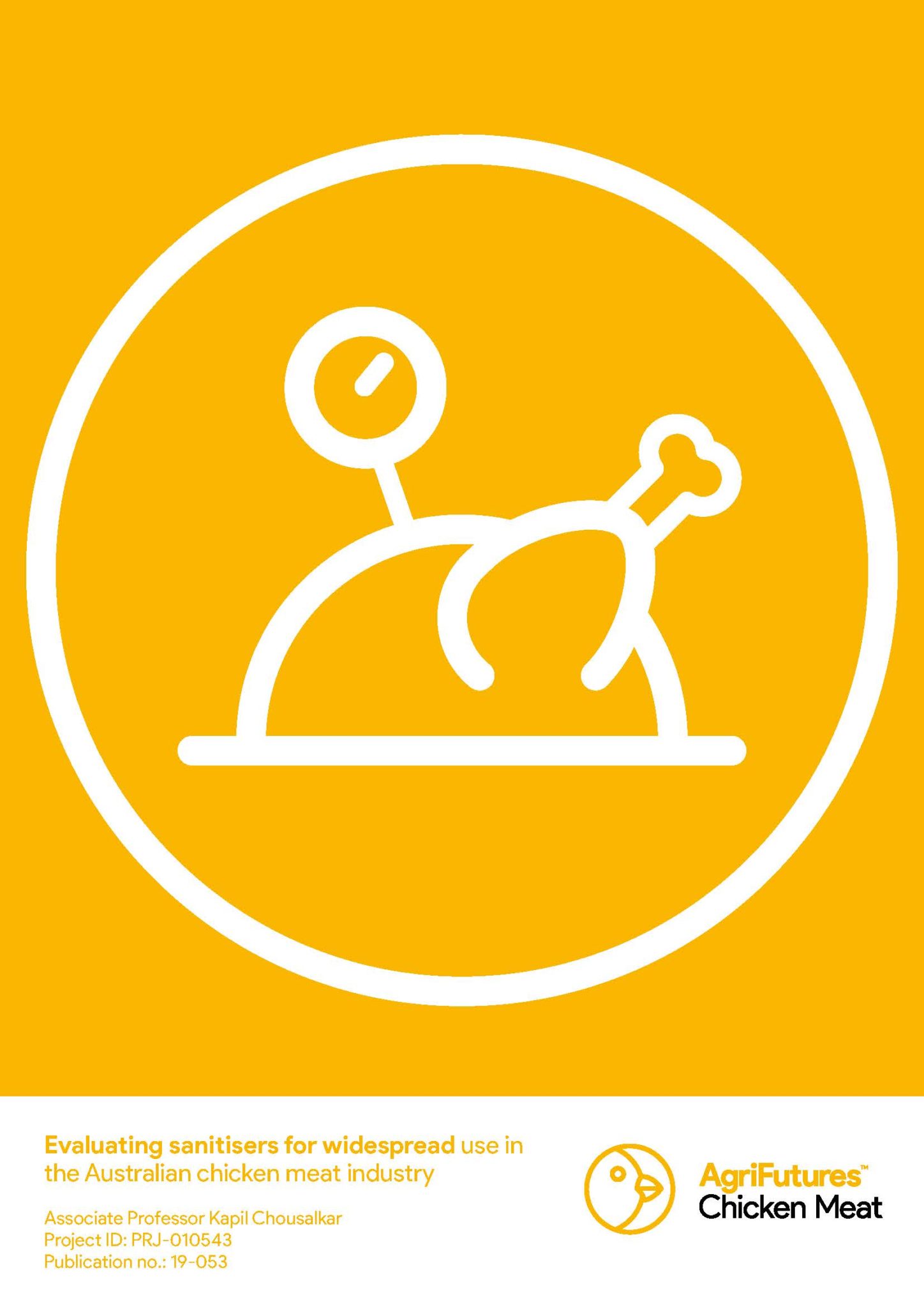Campylobacter and Salmonella bacterial species are the leading causes of human foodborne illness in Australia. Both bacteria are commonly found on raw poultry meat and there is a clear relationship between bacterial count on chicken meat and cases of human foodborne illness.
Chicken meat can become contaminated with bacteria during slaughter, evisceration and at the end of primary processing however, several intervention strategies are used both on farm and in processing plants to reduce or control the presence of bacteria on Australian chicken meat. A key intervention involves systems of washers using chlorinated water to remove the surface contamination. Chlorine has been widely used as a sanitiser for poultry processing in the Australian chicken meat industry, but due to occupational health and safety concerns and customer perception there may be a need to identify alternative sanitisers.
A number of chemicals have been tested on chicken meat to reduce the presence of bacteria on chicken meat, however some chemicals are not registered or approved for use in Australia and may not have been trialled under Australian conditions. This study compared the efficacy of chlorine to three other potential sanitisers – acidified sodium chlorite (ASC), PoultryPhresh and peroxyacetic acid (PAA).





